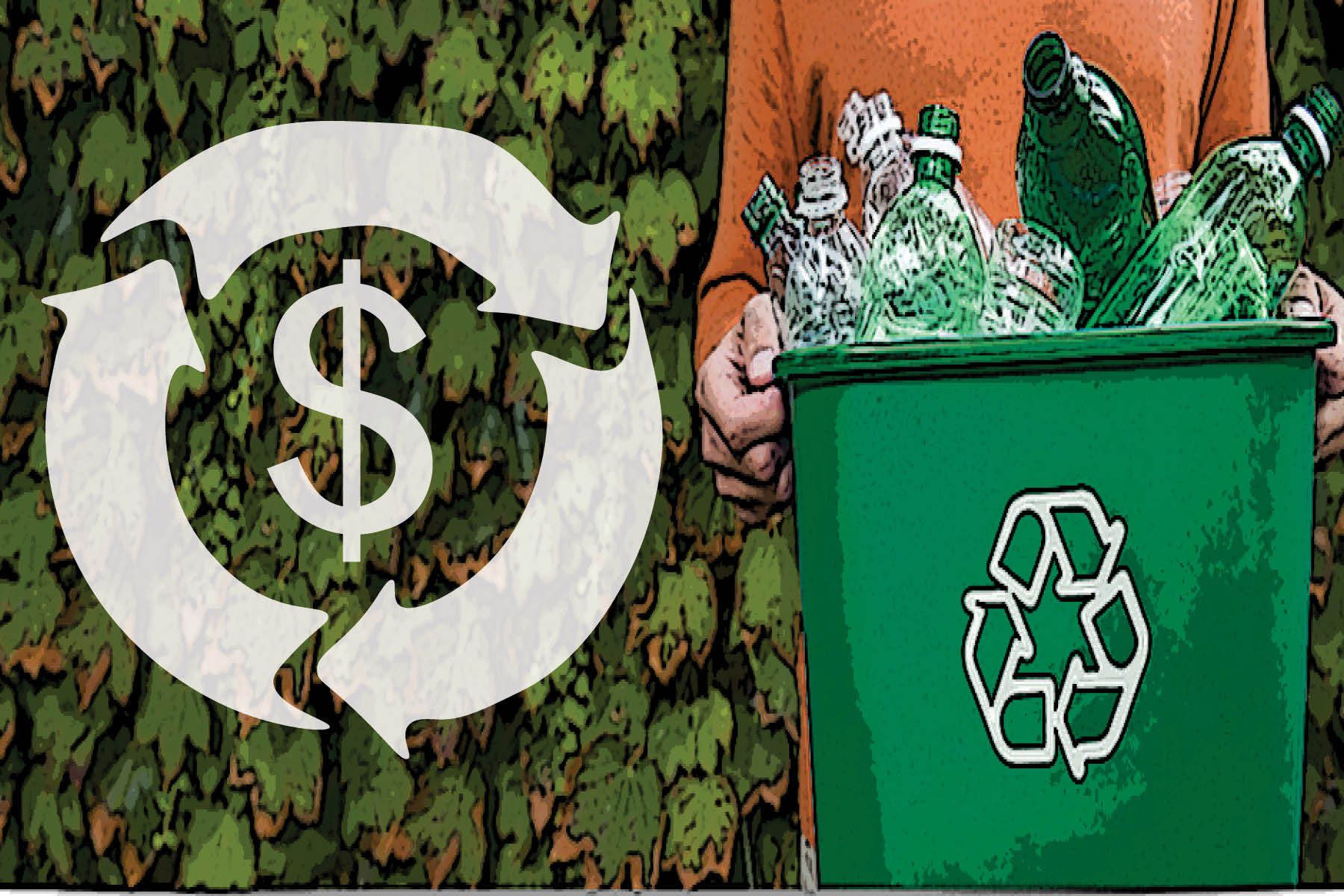You win the lottery. You pay off your loans and buy a nice house for your parents. Since you are smart, you are worried about climate change — unlike the Denier-In-Chief at the White House — so you donate to a few organizations you know will effectively hinder global warming. Using your remaining money, you buy a Tesla and commit to living as an “eco-friendly” consumer.
Suddenly, you are back in your bed; your eyes are puffy from a night’s sleep. Well, you did not win the lottery. Instead, your dream has inspired you to be a smart consumer, to recycle religiously and to save up to buy an electric car one day. Living green is a noble and worthwhile endeavor in an increasingly hazardous world, but you should be ready to face a few harsh realities when it comes to saving the planet.
Companies Forging Environmental Conscientiousness
Green consumerism is not a simple feat, due in part to “greenwashing” — the practice by which companies falsely present themselves as “environmentally friendly” to the public. Consider products labeled eco-friendly. Sounds nice — you might choose to buy the product with the label over one without the label. But what does eco-friendly mean? At what cost-benefit ratio does a product qualify for the title eco-friendly? Nobody really knows.
It’s unlikely the producers even know. What they do know is that it means they can up-charge a product with the label, because of course eco-friendly must be a bonus feature, right? The label’s lack of specificity is a tool for producers to appeal to the mass of consumers who want to be environmentally conscious but don’t have the time or reason to hunt for details.
Volkswagen introduced a blatant example of greenwashing in 2015. The company notoriously “cheated emission tests” with a device built into vehicles that thwarted emissions under testing conditions, thus outwardly meeting regulations. Upon further investigation, the cars were found to actually produce 40 times the nitrogen oxide emissions allowed in the United States.
Fortunately, greenwashing captured the attention of the Federal Trade Commission in the early ’90s. The FTC issued the Green Guides, which aimed to guide businesses away from misleading their consumers. After its deceit, Volkswagen was charged by the FTC based on the Green Guides, ultimately spending nearly $15 billion on the settlement.
Recycling? Time to Switch to Reusing and Reducing
From a young age you are taught to reuse, reduce and recycle. A science teacher of mine once pointed out that recycling is listed last because it should be treated as Plan C. This philosophy is especially relevant today.
In 2018, China enacted the National Sword policy, which banned the import of most recyclables from the United States. The U.S., which for years has heavily depended on other nations — especially China — for the processing of recyclables, is now failing to manage the scraps. The U.S. has turned to shipping plastic waste to countries with “cheap labor and lax environmental rules,” which underlines the possibility of inhumane work conditions and poor management of recyclables. Sure enough, in 2018, National Geographic reported that only 9% of recyclables are actually recycled, while the rest wind up in oceans and landfills.
In recent months, certain states have passed various recycling-related laws, including bans on single-use plastics and the sale of polystyrene packing peanuts. The federal government, on the other hand, has yet to enact substantial policies to unite and boost the national recycling system. After a “COVID-19 hiatus,” a plastics recycling bill was introduced in Congress, reigniting conversations about nationwide recycling efforts.
In the meantime, to minimize waste, it’s safest to cut back on plastic use, and make the effort to reuse when possible to evade the sticky mess that is recycling.
The Deplorable Secret Behind the Rechargeable Battery
Some of the worst humanitarian crises are exacerbated by the effects of climate change. Thus, one would expect the opposite to be true: Efforts to combat climate change in turn elevate the human condition.
Unfortunately, this relationship does not appear to hold. Some of those most vulnerable to the effects of global warming can also be the victims of efforts to combat it. In the Democratic Republic of the Congo, thousands of impoverished children, whose economic status makes them more susceptible to the destruction of climate change, are sent into mines to harvest cobalt, which is an essential ingredient in lithium-ion rechargeable batteries.
An estimated 40,000 children are working in mines in the DRC, according to a report published in 2016 by Amnesty International. As young as six or seven, these kids reportedly work up to 12-hour days, carrying “back-breaking loads” in “intense heat.” They leave the mines with one or two dollars each day and often develop health problems that might torment them for the rest of their short lives. Among adult miners, long-term health problems including lung disease are also major concerns.
A study published this April found a strong correlation between paternal occupational mining exposure and birth defects in children, attributed to exposure to toxic pollution in the cobalt mines of the DRC. According to an article by The Guardian, the study was launched in response to reports of “high numbers of children of miners in the DRC being born with … limb abnormalities, cleft palates, and neural tube defects.”
The DRC is responsible for 60% of global cobalt production. This means many of the lithium-ion batteries in smart devices and electric cars can be traced back to the treacherous mines and human rights violations of the DRC. Big tech companies including Tesla, BMW, Apple and Microsoft, faced heavy scrutiny following investigations revealing human rights violations in the early stages of the companies’ production processes.
In a follow-up report published in 2017, the same companies were investigated, specifically regarding efforts made to tackle the child labor in the DRC since the first report. It was determined that BMW had reacted the best among tech giants. Under public pressure, Elon Musk indicated Tesla would make efforts to eliminate cobalt in the car’s battery.
Supposedly the element’s levels in the battery have dropped significantly since 2016 — an improvement owed to the report that exposed Tesla. Amnesty International allegedly began working with Greenpeace USA to track “human rights and environmental impacts throughout the battery life cycle.” The influence of that initial report has been resounding.
This past November, Forbes released an article about a lawsuit filed against several big tech companies, including Apple and Tesla, over the deaths of child Cobalt miners in the DRC. The plaintiffs, former child workers, accused the companies of “knowingly benefiting” from the use of child labor. The threat of punishment for their involvement has forced “green” companies to make changes and review their supply chains, a step that should be taken regardless of threats of retribution. Environmentally-friendly technologies have to be human-friendly as well.
Your Voice Against Climate Change
Although disheartening, the problems underlying the green lifestyle pose alternative solutions. For example, the injustice behind the rechargeable battery demonstrates the power of awareness and speaking out; it was consumers and private researchers who exposed the injustices of the rechargeable battery.
As a global citizen and participant in the global economy, you have the ability to do the same: unearth injustices and compel big industries like Tesla to become more ethical and more transparent. Your everyday actions as an individual are salient — from the food you eat, to your methods of travel, to the products you purchase.
















